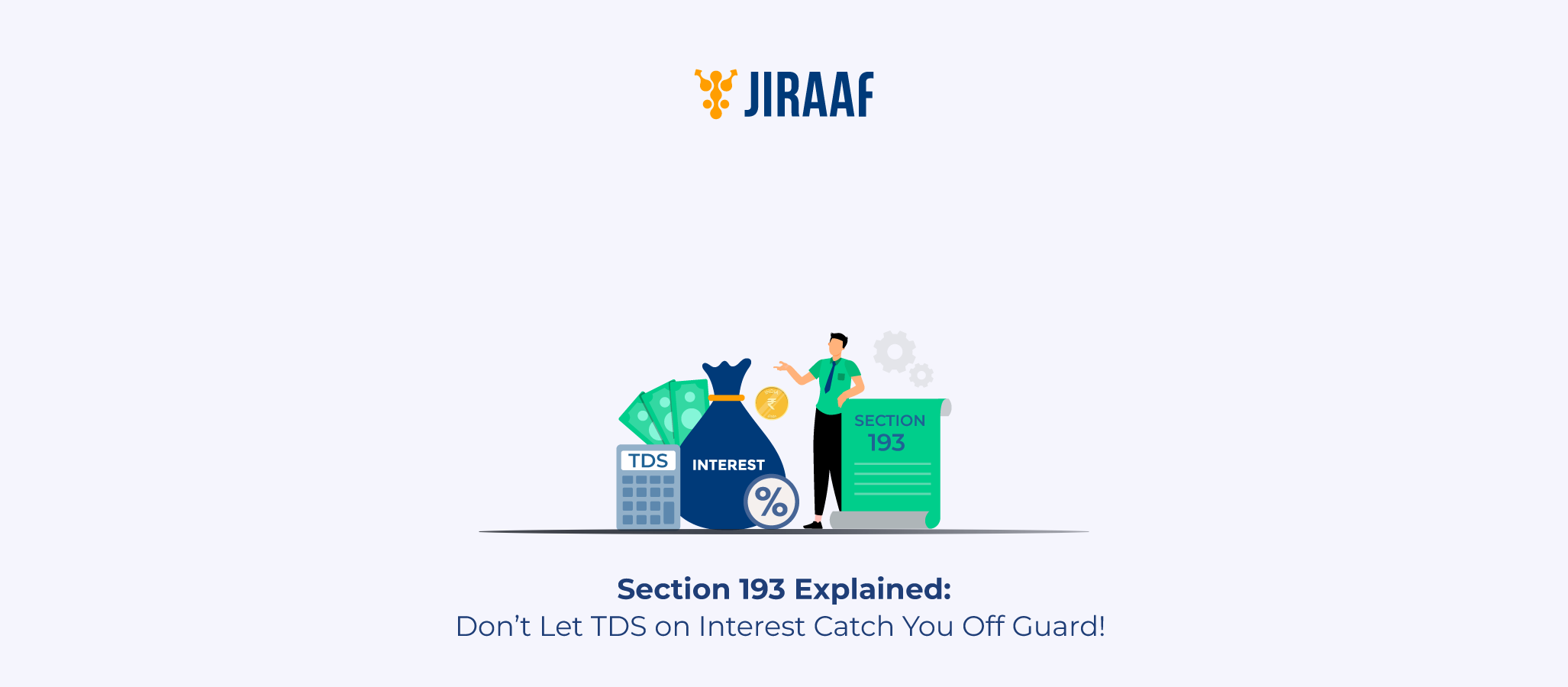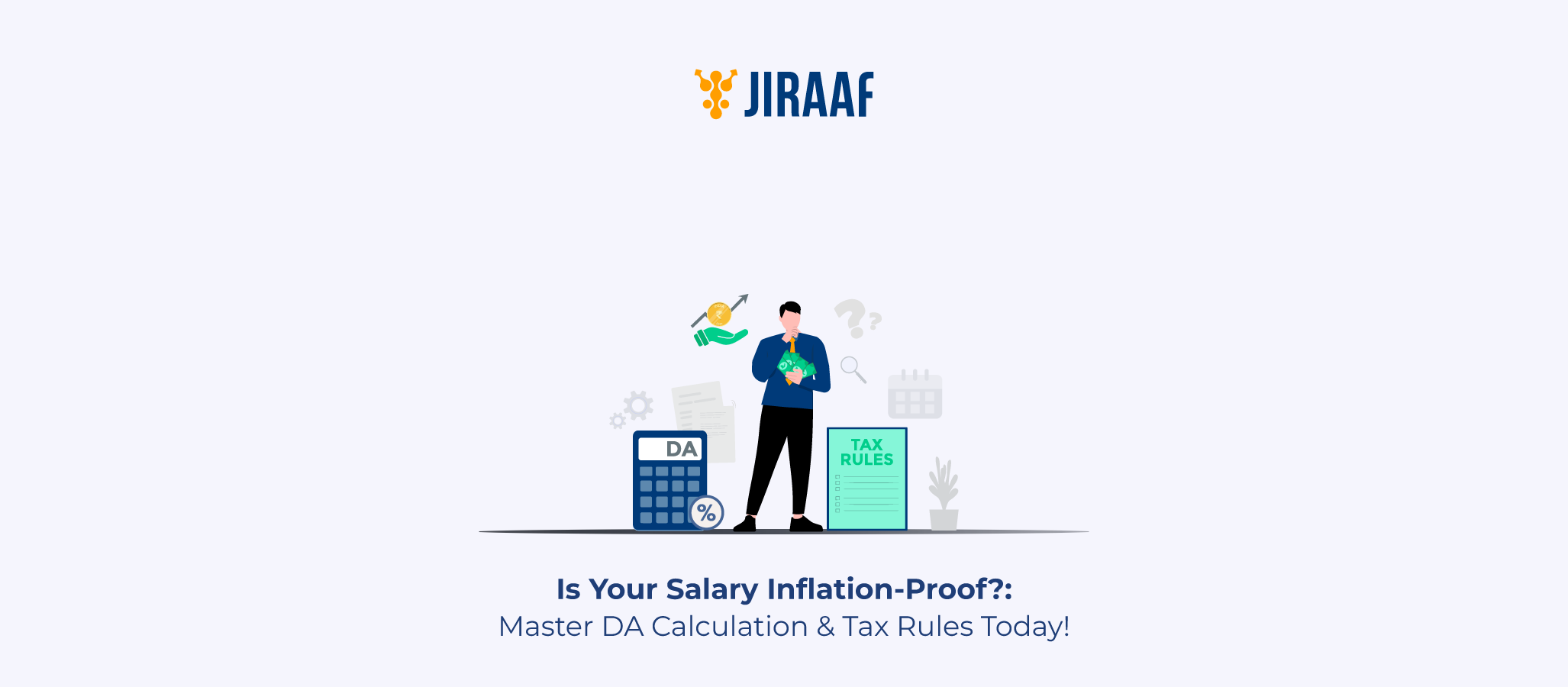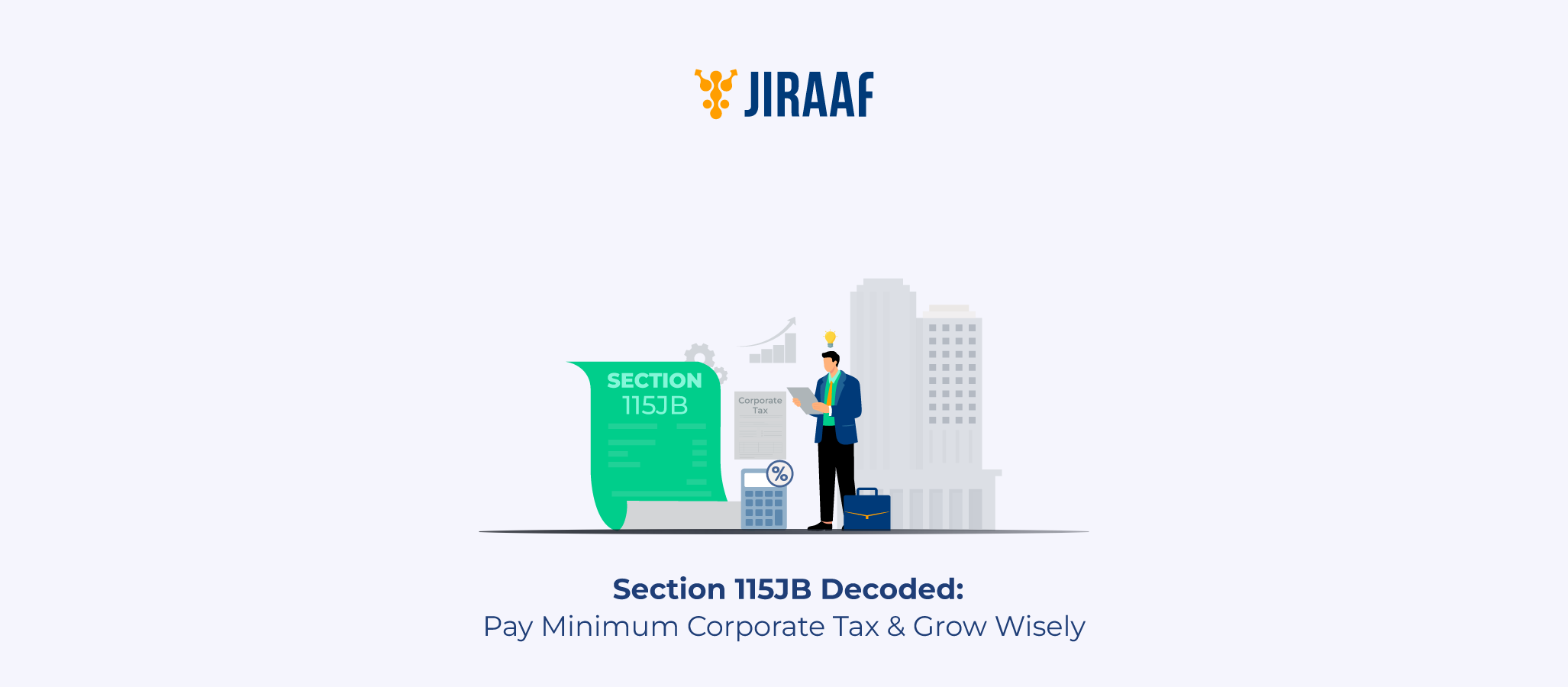Interest income can quietly add up year after year from corporate debentures, government bonds, and other instruments. But did you know that payments on certain types of interest require Tax Deducted at Source (TDS) under Section 193 of the Income Tax Act? This blog makes it easy to understand how Section 193 works, the types of interest it covers, the TDS rates, exemptions, and the common pitfalls to avoid.
What Is Section 193 of the Income Tax Act?
Section 193 mandates that tax must be deducted at the source when interest is paid or becomes due on securities, such as corporate debentures and government bonds. The payer (company or government entity) must deduct TDS before making the interest payment, ensuring timely tax collection.
Note: This doesn’t apply to general interest like fixed deposits or loans (which are covered under Section 194A); it specifically applies to interest on securities only.
Objective of Section 193
The primary aim is to prevent tax evasion and maintain fiscal discipline by ensuring that all interest on securities is taxed upfront. It simplifies tax collection and reduces reliance on manual taxpayer compliance.
When Is TDS Deducted Under Section 193?
Types of Interest Covered
- Debentures (listed and unlisted)
- Government securities, treasury bills, RBI bonds
- Interest-bearing loans from financial firms on marketable securities
- Interest on securities held as collateral
Timing of Deduction
TDS must be deducted at whichever of these two occurs first:
- When the interest is credit to the recipient’s account
- When the interest becomes due for payment
TDS Rates Under Section 193
Applicable Rates (FY 2025–26)
| Scenario | Rate |
| Interest on securities (with PAN) | 10% |
| If PAN is not provided | 20% |
| If non-filer under Section 206AB | Higher of 20% or rate under 206AA |
Threshold Limits
- Debentures: TDS applies only if interest exceeds ₹5,000 in a year.
- Government securities: No threshold; TDS applies regardless of amount.
Exemptions Under Section 193
When TDS Is Not Deducted
- Interest paid to entities like RBI, nationalized banks, LIC, and notified trusts.
- Recipients submitting Form 15G or 15H, declaring that their total income is below the taxable limit.
- Interest on NSC, KVP, and small savings.
- Interest received by EPF or PPF accounts (as they are inherently exempt).
Reminder: Even if exempt, the payer may deduct TDS unless Form 15G/15H is submitted. It’s your responsibility to file for a refund later.
Section 193 vs Section 194A: What’s the Difference?
| Feature | Section 193 | Section 194A |
| Applies to | Interest on securities (debentures, bonds) | Interest other than securities (FDs, loans) |
| TDS Rate | 10% standard | 10% standard |
| Threshold | ₹5,000 for debentures; no limit for government securities | ₹5,000 |
| PAN Conditions | Higher rate (20%) if PAN not provided | Similar treatment |
| Objective | Collect tax on capital market instruments | Tax consumption and savings income |
How to Report TDS Deducted Under Section 193 in Your ITR
Cross‑Check in Form 26AS / AIS
- Interest and TDS are reflected in Form 26AS under section “TDS on Securities.”
- Cross-verify this entry while preparing your return.
Using TDS Certificate (Form 16A)
- Payers issue Form 16A containing details of the TDS deducted.
- Match this certificate value with Form 26AS and declare it correctly in Column 47A (TDS on securities) of ITR.
TDS under Section 193 in Action: Example
Scenario
Priya holds ₹1 lakh in listed company debentures paying 8% interest annually.
Total interest = ₹8,000.
TDS Calculation
- Threshold exceeded → TDS applies at 10%
- Tax deducted at source = ₹800
- Net received = ₹7,200
- Issued Form 16A and reflected in Form 26AS
During filing, Priya claims the ₹800 TDS and pays any additional tax if needed.
Common Mistakes to Avoid Under Section 193
| Mistake | What It Means | Impact | How to Avoid It |
| Not Submitting Form 15G/15H | Senior citizens or individuals below the taxable limit forget to submit these forms to the interest payer. | TDS is deducted even when total income is non-taxable. | Submit Form 15G (for those below 60) or Form 15H (for those 60+) at the beginning of the financial year. |
| Not Linking or Quoting PAN | PAN not provided or incorrectly quoted to the issuer of securities. | TDS deducted at 20% instead of 10%. | Always provide a valid and correct PAN to avoid higher TDS under Section 206AA. |
| Assuming No TDS on Govt. Securities | Believing that government securities are exempt from TDS due to their nature. | TDS is still deducted without warning, leading to surprises. | Know that no threshold applies to government securities—TDS is applicable even on ₹1 of interest. |
| Confusing Section 193 with Section 194A | Misunderstanding whether interest income falls under “securities” or “non-securities.” | Leads to incorrect TDS declaration in ITR or mismatch in Form 26AS. | Understand the difference: Section 193 is for securities like debentures; 194A is for FDs and loans. |
| Ignoring Form 26AS and AIS | Not verifying tax credits before filing ITR. | Leads to mismatches, refund delays, or notices from the IT Department. | Always cross-check Form 26AS and the Annual Information Statement before submitting your ITR. |
| Missing TDS on Accrued Interest | Only considering paid interest, not accrued interest due but unpaid. | Results in under-reporting income and interest mismatch. | Include both paid and accrued interest in income, as TDS is deducted on due or credit, whichever is earlier. |
| Relying Only on Interest Slips | Trusting only the physical statement from the issuer instead of actual tax records. | May overlook updated deductions or discrepancies. | Reconcile interest slips with Form 16A, 26AS, and AIS to get the full picture. |
Conclusion: Stay Tax-smart with Your Interest Income
Understanding Section 193 ensures you’re not caught off guard by surprise tax deductions or compliance errors. Whether you’re an investor, a retiree, or a financial professional, knowing which interest income falls under this section and taking timely action is crucial for smooth filings and financial peace of mind.
FAQs
What is the TDS threshold under Section 193?
For debentures: ₹5,000 per year. Government securities have no threshold limit—TDS applies regardless of the amount.
Is Form 15G/15H applicable under Section 193?
Yes, if you expect total taxable income below the minimum threshold, you can submit Form 15G or 15H to avoid TDS.
What is the TDS rate for non‑residents under Section 193?
Non-residents generally face the same 10% rate, but DTAA could alter this. PAN and TRC submission may help claim relief.
Can I get a refund if excess TDS is deducted under Section 193?
Yes. File your ITR, report the actual tax due, and claim the excess TDS as a refund by matching Form 26AS and Form 16A.
Discover fixed income investments with Jiraaf, a SEBI registered online bonds platform that educates and brings access to a wide array of bonds. Sign up today to explore diversified fixed income investment opportunities to support your goal-based wealth creation journey. Start investing!









